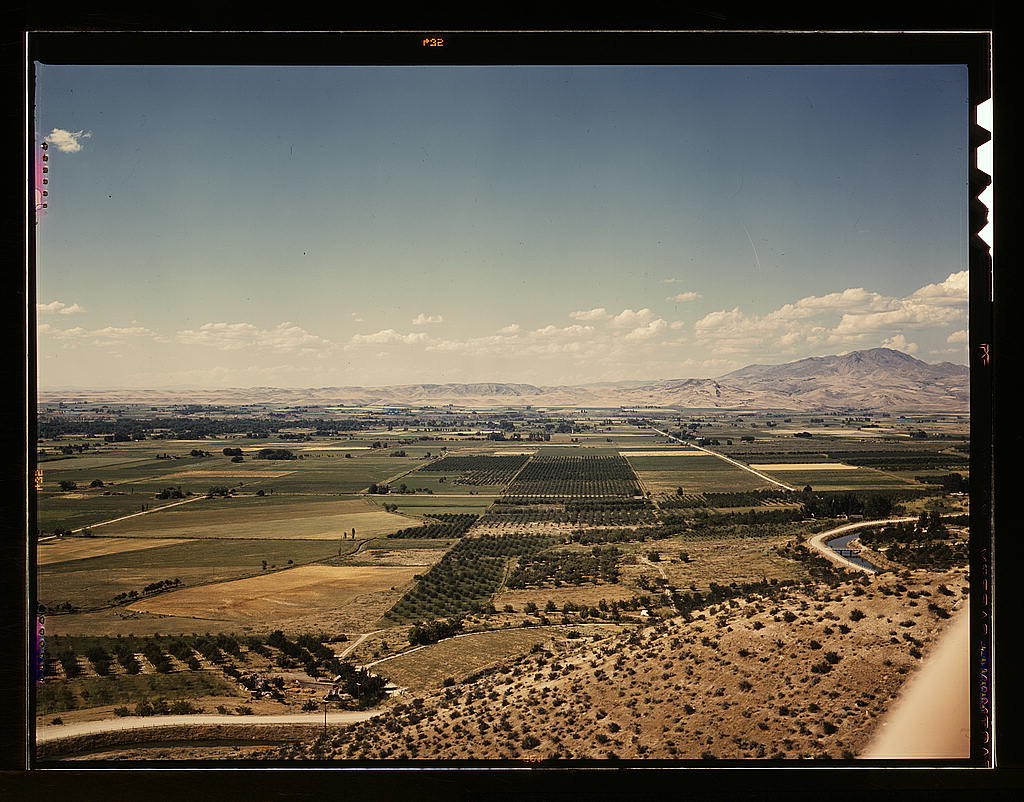"Harrowing a field with a diesel tractor, Seabrook Farm, Bridgeton, N.J." c. 1942, Library of Congress.
The connection between science and state power might seem
tenuous to those who have not yet drank the Kool Aid. We know that science is
used in political debates as the ultimate fact-checker. Is this new drug safe?
Let’s do a risk assessment. What’s the trade-off of building this new dam?
Let’s have an environmental impact assessment. But to anyone who’s studied the
politics of environmental controversies, these scientific measures are hotly
contested and imbued with political values.
James C. Scott’s fantastic book, Seeing Like a State, outlines how states have used scientific
measurements and standardization to render social life and the environment
visible, and thus, controllable. A city map can reflect necessary information like
the location of businesses, and the layout of roads. People are not trackable and taxable unless they have
standardized and stable names, land tenure, locations, and ethnicities. But
while these simplifications of social life are a necessary abstraction, they
miss the nuances of societies, can have systematic flaws, and do not represent
local resistance to top-down order (for example. Maps, censuses, and other
technologies we use to make complex systems legible also shape how state power
interacts with local autonomy. When wheat becomes a commodity to be measured,
weighed, shipped, and sold, suddenly “agriculture” is not so much a social
process as a means to an end. The mechanization of agriculture seen in the 20th
century reflects the expansion of commodity chains due to railroads and
steampower in the 19th century. See this post for an example of Scott's "high modernism" theory in China.
In Samer Alatout’s study of water politics in midcentury
Israel, he shows how the social construction of water scarcity coincided with
expansion of state power and centralization of water technologies. Instead of
viewing science and politics as separate spheres, Alatout shows how “water
scarcity and the strong centralized state were produced in the same technopolitical process" (p. 962). Focusing on
estimates of water supplies in Israel, he writes that for the chief water engineer
at the time, Aaron Wiener, “estimate reduction was a step in the right
direction, towards a practical, empirical notion of the ‘scientification’ of
water policymaking. He commented often on the fact that water policymaking
during Blass's reign was anything but scientific” (p. 970).
Water estimates and their role in Israeli foreign policy
are a good example of a “boundary object” that is used to negotiate between
social and scientific spheres (although as I indicated earlier, the “boundary”
itself is not so clear). And interestingly, people who seem the most capable of
recognizing these boundary objects are STS scholars and conservatives.
Throughout the article, I was thinking about a recent book I read, Merchants of Doubt by Naomi Oreskes and
Erik Conway. In this book, the authors show how from the end of WWII and up to
today, a group of scientists have used their influence to cast uncertainty on health
and environmental reform. These doubt-mongering scientists, some of them
hawkish Cold War heroes, believe that liberal environmental politics reek a bit
too much of Communism. Smoking bans, acid rain regulations, and climate taxes
all represent an expansion of state power over industry, and thus must be
attacked in the only legitimate way: through science. They exploit the
uncertainty of boundary objects like climate models.
Although Oreskes and Conway’s book is a rich piece of the
history of science in politics, there is some unpacking left to do about the
role of science and the state. Reading Scott and Alatout, there might be good
reason for conservatives to worry about environmental politics being used as a
tool to expand state power. Or in the case of climate change, non-state power
as well (think “disaster capitalism”).
Guess what, this is my 50th blog post! Many, many thanks to those of you who read, follow, and share my blog. According to Blogger, I've had over 5000 pageviews.
Works cited:
Samer Alatout, “'States of Scarcity': Water, Space, and Identity Politics in Israel, 1948-1959,” Environment and Planning D: Society and Space 26:959-982. 2008.
"Cherry orchards, farm lands and irrigation ditch at Emmett, Idaho," 1941, Library of Congress.
Guess what, this is my 50th blog post! Many, many thanks to those of you who read, follow, and share my blog. According to Blogger, I've had over 5000 pageviews.
Works cited:
Samer Alatout, “'States of Scarcity': Water, Space, and Identity Politics in Israel, 1948-1959,” Environment and Planning D: Society and Space 26:959-982. 2008.


Happy 50th post! I've loved reading them all -- they keep me immersed in these topics and I appreciate that. I'm also now adding these books to my reading list (with the exception of Merchants which I read).
ReplyDeleteThank you so much, Brandi! I think you'd really like "Hungry World" by Nick Cullather, which I mentioned in previous posts. I'm hoping to write another post on Seeing Like a State this week, it's a great book.
ReplyDelete